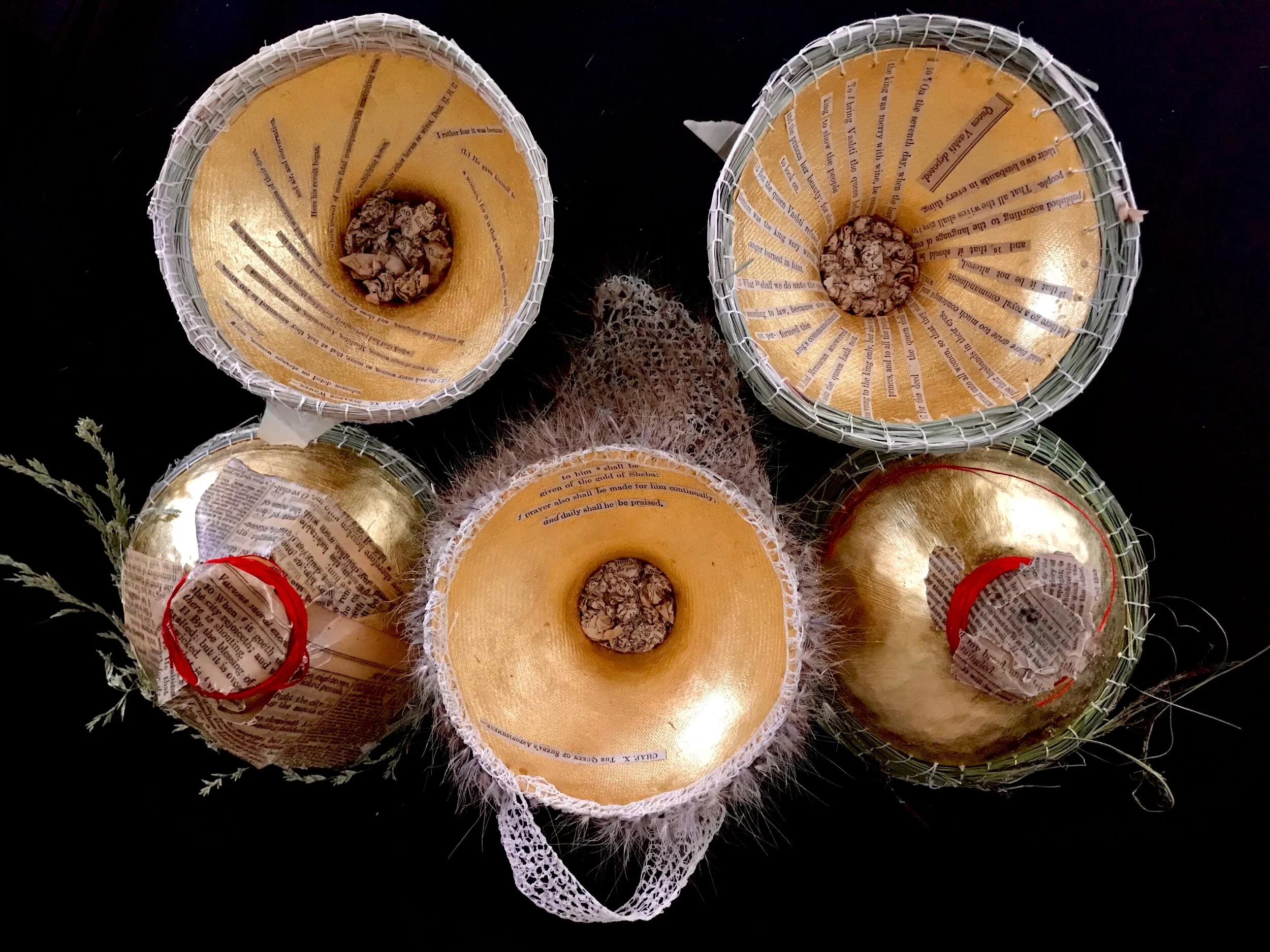
‘Sheba’s Legs’ takes inspiration from the ancient practice of the incantation bowl and the notion of ritual as a process of healing and re-memorising.
Commonly known as ‘magic bowls’ and used across the Abrahamic religions to expel demons and protect houses, such bowls were inscribed with incantations, divine names, curses and spells. This sacred text, it was believed, would trap demons inside the bowls, which were often turned upside down and buried.
In this series of ephemera, gilded disposable paper bowls woven with foraged neighbourhood grasses and seeds and Japanese silk thread are inscribed with biblical verses. The bowls, by design, represent sustenance; their material riches of and from the earth. But the ‘sacred text’, which was cut from a recently inherited family bible, rather than promising protection or absolution, reflects a devaluing of the divine feminine – be it woman and/or nature – and an affirmation to vulnerability, submission and slavery.
In this way, the bowls could be viewed as a kind of lamentation. It is not a demon that is trapped, shaped and discarded by sacred verse, but the Other.

